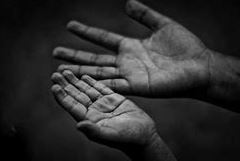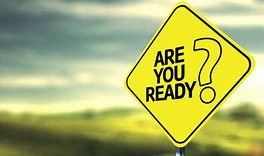Two weeks after we moved in to our first home outside Seattle, Washington, the worst ice storm to hit the Northwest in twenty years pounded us. Eighteen inches of heavy snow received three inches of ice. It was heavy, hard and unmmovable.
This doesn’t sound like much, but for an area used to rain, it was nearly catastrophic. We were completely unprepared for our situation. Our home was on a plateau, 800 feet up from sea-level, the paved road steep, the area wooded and shaded. Ironically, we were only a quarter-mile from the main road, but it was enough to strand us and the other fifteen home-owners for two weeks. No way to get down (who owned snow removal equipment? No one) nearly all of us caught off guard, with little food, supplies, gas or heating. We literally had no way to make the half-mile trek down to the main road until the ice and snow thawed.

When Rog finally could make it down the hill, he found every gas station down to Tacoma was dry (about two hours south of us), and it was consuming all his gas just to drive around. The few of us who had small generators had long-since run out of gas. It was the crash course lesson in homeownership, self-preparation and common sense rolled into one very stressful two-week period.
The lessons learned
1) get a bigger generator that didn’t consume five gallons of fuel for every two hours
2) upgrade said generator to include an automatic “on” switch for power outages.
3) improve the food on hand from random canned goods capable of sustaining life for about a week or two to actual “food storage” which could keep us healthy and alive for months.
4) have alternate forms of heating for the home. Electric is great until the main grid goes down, which it did within five hours of this storm. A fireplace is also wonderful, except when you’ve never used it and don’t have dried wood stored about.
Growing pains: from theory to reality
At that point in our young marriage, (two years) we thought “holy crap, we’re never going to survive,” what life is going to throw us. So we made a priority list. While this article may come too late for some of you, it’s never too late to make an assessment of where you’re at and what you can do to keep your family safe, well-fed and secure, even if you’re “family” is only you.

In order of priority
- 500 dollars in small bills (10/5/1s). Reasoning: all the electronics systems can go down. No credit/debit cards and no checks accepted. Further, when/if this happens, very few have change. If Rog went to a place and offered a 20, they’d happily take it, but couldn’t offer change. If you fill a car with $60 and need groceries, $100 or $200 doesn’t go far.
- Extra gas. Reasoning: Small generators and nearly all home equipment require gas. Rog ran into this immediately when trying to leave our home during this storm. The ice caused branches and a few huge trees to block the road. Only one of our two chainsaws worked (another problem), and neither had much gas. The old-timers in the community had extra gas, but it was limited.
- How much? Ten gallons minimum. Additional item: when he went to purchase these, the stores were out. It wasn’t until much later we would actually find/buy and fill them.
- Have mixed fuel tanks, diesel and gas. You never know what you/your neighbors will need. Be over prepared.
- Food & water. Reasoning: living is good. We didn’t believe going in debt to have food storage was smart, so we budgeted $100 per month for the two of us, our dog and two cats.
- Our goal: build up to one-year food supply, but start with 3 days, 2 weeks, 1 month, 3 months and just continue until we reached that point. Honestly, we never did reach one year while we lived there, capping out at about eight months, and it was a blend of 20 year, 2 year, 3 months, the spread between dehydrated, freeze dried. While I started out being scientific (order or purchasing by item etc.) that shortly gave way to pragmatism. I went with what I could find, but followed a few guidelines.
- Purchase 1 extra of whatever I was buying, either water, a can of food, tampons or lighters. When I reached my “goal” of an item and quantity, I stopped. It didn’t take too long to reach cans of tuna, soup, water and the like.
- Have a balance of short, medium and long term food and types. 1 20 year can of soup ($14.00) which gives 40 servings, or roughly enough lunches for a month for a family of two. We have three types of long-term food storage, mid-term (think freeze-dried found at Dicks and elsewhere) and short based on preferences.
- Use and replace. Canned food has an expiration date. Cycle through and use product so they don’t get old.
- Long term food. This is most commonly found in 10 lb cans. As of today, one of the brands we use, Auguson Farms, has paused orders and are 2 months back ordered, but many outdoor and supply stores still have it in stock).
- Our goal: build up to one-year food supply, but start with 3 days, 2 weeks, 1 month, 3 months and just continue until we reached that point. Honestly, we never did reach one year while we lived there, capping out at about eight months, and it was a blend of 20 year, 2 year, 3 months, the spread between dehydrated, freeze dried. While I started out being scientific (order or purchasing by item etc.) that shortly gave way to pragmatism. I went with what I could find, but followed a few guidelines.
- Alternative/back-up heat. Reasoning: gas runs out. Wood doesn’t.
We went with a Quadafire wood burning stove for the main floor and a pellet stove for downstairs. Yes, we had to purchase dry wood in the summer, storing it under the deck, but the $250 one-time annual cost saved us $450 per month! Plus it was faster to heat the home and longer lasting, as it heated the floors, walls and multi-story lava rock fireplace. - To-Go bags. When I left for college, my mother gifted me a backpack for the car, one which included the essentials for survival. While the items inside have been upgraded or replaced over time, the bag has never left my car. Ever. What do I have?
- Water, water purifier, first aid kit, metallic blanket, storage food, essential toiletries, cold and warm weather essentials (e.g. snake bite kit for warm weather), lighter, mini scriptures). If you don’t have the money or can’t find a purifier, you can get the tablets, commonly found in any camping or outdoor store.
- Necessary documents. I’m going to devote another blog to this at some point, but what you must have, either in writing or electronic to take on the go include: family photos, passport, birth certificates-either images/numbers, asset insurance paperwork (home, car, life) medical history – e.g. for your kids/relatives for school or other required materials. You can put this on a solid state storage device like a USB or smart card. I prefer a multi-use USB- it’s versatile.

Home preparation is like that starting a marathon; at first it seems overwhelming, and you can’t imagine you’ll ever finish, but yet you are do, and are satisfied you made the effort. Wherever you’re at, just start. Take it one item, one shopping trip and one day at a time. And along the way, make it fun and remember the little things such as closing the drapes/blinds when it’s cold because it saves heat, or close the doors to unused rooms and make a tent bedroom in the living room. You’ll save heat, have family bonding time and sleep well knowing you are doing all you can for your family.
Interestingly, when we moved to Idaho, we had to start all over. No generator nor gas tanks, and even now, four years later, we still haven’t bit the bullet to convert our gas fireplace to a dual wood/gas. That means we still have improvements to make, and are hoping to get a few vital things buttoned up. It’s probably the rare person or family who has every element of their preparedness taken care of, but I’d hypothesize that they sleep the best of all.

